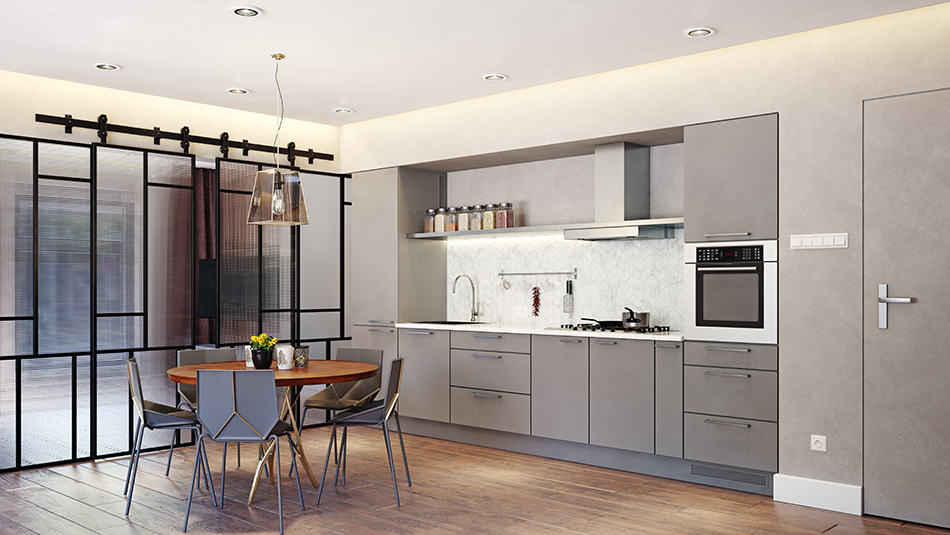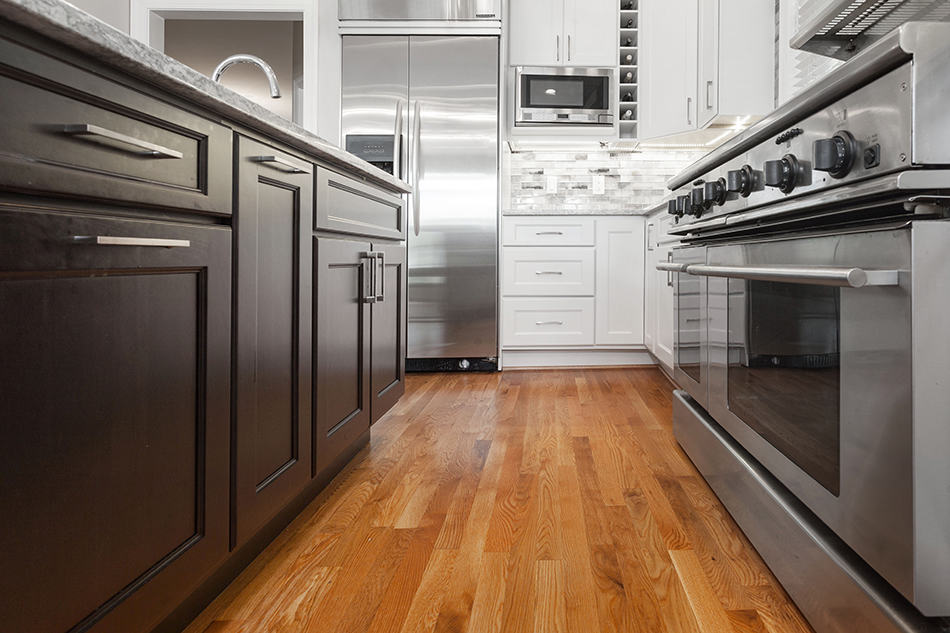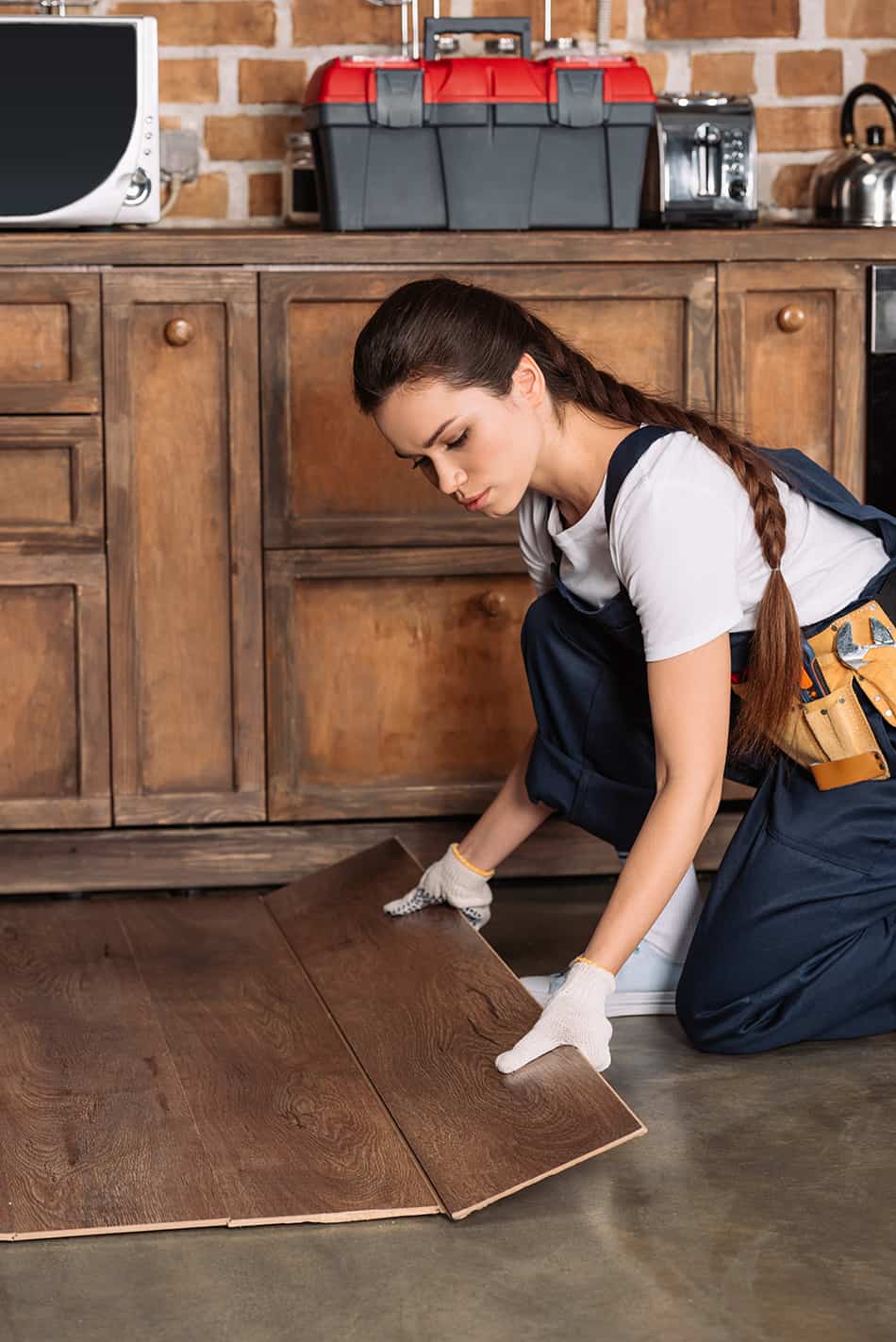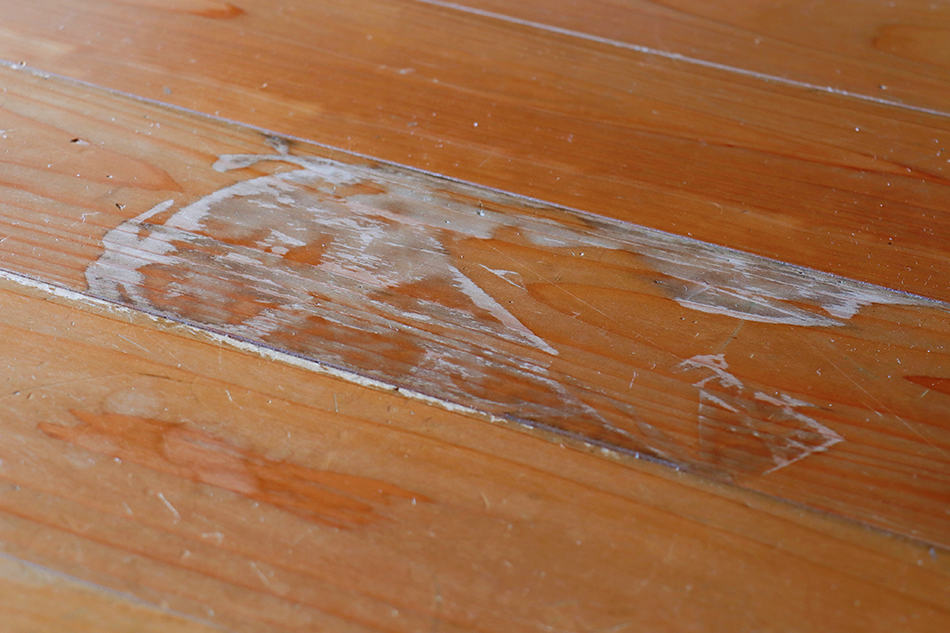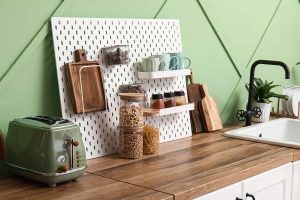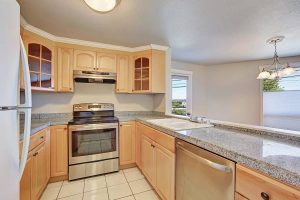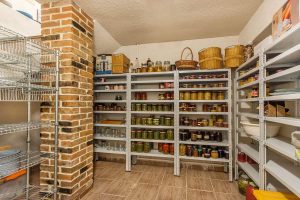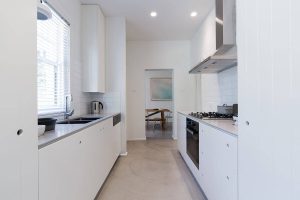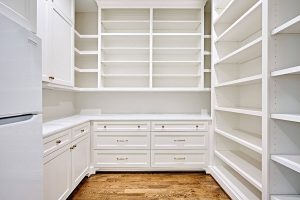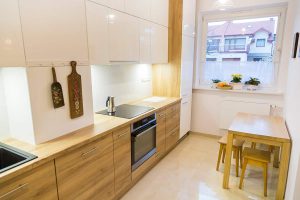Engineered wood is also known as composite wood or manufactured board. It’s a man-made wood product. But don’t be misled by its names – it’s not entirely synthetic, and it’s also far from being a cheap plastic knock-off that only mimics the appearance of wood.
Engineered wood is made from binding strands, fibers, particles, or veneers derived from different natural wood into a thin layer. The layer is then bonded to high-quality plywood using an adhesive.
The plywood provides a solid and stable core since it’s made from about three to twelve layers that have been cross layered, glued, and tightly pressed together. It provides a supportive base for the thin wood layer on the top and stops it from warping. This multi-layered structure sets engineered wood board apart from solid wood, cut from one piece of timber.
The top layer on an engineered wood board can be made from various hard and softwoods, like maple, oak, cedar, and fir. But you can also find them in more exotic wood species such as Brazilian walnut, Australian hardwoods, and Tigerwood. Each plank can be between three-eighths to half an inch thick and can be three to seven inches wide. Plank length varies from twelve to sixty inches.
Advantages of Engineered Wood Floors
Engineered wood has some great aesthetic and functional advantages that make it an ideal flooring option.
It Looks Just As Good As Solid Wood
Good quality engineered wood brings a warm and all-natural look to your home and looks just as authentic as the “real” thing.
It also offers a break from the traditional tiling you’d expect to find in most kitchens and can increase the long-term value of your home.
It’s Easy To Install
Engineered wood planks can be installed directly over a concrete floor or on top of a wood subfloor. One common way of installing engineered wood is to simply glue it down. In contrast, solid wood can only ever be installed on a wood subfloor. Its installation is a bit more complex, requiring staples or nails.
So if your home doesn’t have a basement or only has one level built on a concrete base, you can’t install solid wood floors, but you can get engineered wood floors.
You can also “float” engineered wood boards, meaning that you lay them over a polyethylene underlay. The planks are glued to each other but are not attached to the underlay. The floating method is straightforward, and you can even do it yourself if you enjoy DIY home improvement projects.
It’s Easy To Maintain
It’s relatively easy to keep engineered wood floors clean. A daily sweep and wiping down with a damp mop are just about all the maintenance you’ll need to do. To prolong the life of your floors, it’s a good idea to apply a manufacturer-recommended floor cleaner, oil, or lacquer every few months.
This helps to protect them and keep them looking good. Plus, you can further safeguard your engineered wood floors from scratches and dents by sticking soft pads to the bottom of your table or chair legs.
It’s Very Stable
Solid wood is sensitive to temperature changes. As a result, it will expand and contract over time, which may leave you with gaps in between the boards on some sections of your floors.
Since engineered wood is manufactured through layering and doesn’t comprise a single piece of solid timber, it can withstand temperature changes. Although engineered wood will also expand and contract, the changes are not as pronounced as solid wood, making engineered wood more stable.
It’s Moisture Resistant
This advantage can be easily misunderstood, so we must be careful. Engineered wood floors are not 100% waterproof. In fact, it’s recommended to deal with a spill on an engineered wood floor in the same way that you would treat it on a solid wood floor – by wiping or mopping it up quickly.
At this point, you might question why moisture resistance is even listed as an advantage. Well, that’s because engineered wood is more moisture-resistant than solid wood due to its layered structure. And the upside of this is that you can install it in areas with moderate humidity, like a kitchen or basement, which are typically no-go areas for solid hardwood floors.
Disadvantages of Engineered Wood Floors
Of course, engineered wood has some disadvantages that could make it less than ideal. Here are some of the things you should think about before calling the installers.
Most Engineered Wood Floors Can’t Be Refinished
If your engineered wood floor gets dented, gouged, or scratched, or you want to change the color of its stain, you’ll probably have to replace the board or the entire floor.
Most engineered wood boards can’t be sanded down and refinished the same way that solid wood can. That’s because the top wood layer of engineered timber is much thinner. A possible solution would be to install an engineered wood floor with the thickest top layer available. You might be able to refinish it once, but even this is not guaranteed.
Not All Engineered Wood Is Equal
Unlike solid wood, the quality of engineered wood varies and can be pretty inconsistent. Poor quality engineered wood can wear out quickly or fade from UV exposure.
To make engineered wood more affordable, some manufacturers use glues that contain chemicals that give off a bad smell after installation. This off-gas can cause harm to your family. It’s essential to do your homework when considering engineered wood flooring to ensure you get the best quality.
So, Should You Have Engineered Wood Floors In Your Kitchen?
The idea of putting wood flooring in your kitchen may sound like a bad idea. However, this is more the case for solid wood because it doesn’t handle temperature fluctuations and moisture well. On the other hand, engineered wood fares better in a kitchen and won’t be as easily impacted by steam, spills, and other temperature variations from cooking.
So, the simple answer to the above question is “YES!”. Engineered wood floors aren’t only stylish and modern when used in kitchens, but they add warmth to the room, allowing it to truly become the heart of your home.
Whatever the size or decor of your kitchen, you can find engineered wood boards that can work well in it, thanks to the range of styles, colors, and sizes available.
Engineered wood can make a small kitchen look bigger. To achieve this illusion, choose boards that have a medium to broad width and relatively long length. Have the panels installed vertically to the kitchen’s longest wall or diagonally at a 45-degree angle to create more depth and a clean, uncluttered look.
In large kitchens, floorboards of any size look great. If a stylish and contemporary look is what you’re after, narrow and long floorboards are an excellent choice. Want a more textured look? Go for broad floorboards with a shorter length and installed in the popular chevron pattern.
Keep in mind that a kitchen is one of the busiest rooms in a home. So, you should always consider your family’s habits and usage patterns before making your final choice.
Where To Buy Engineered Wood Flooring
If you plan to install engineered wood floors yourself, you can find boards at good home décor and hardware stores. You’ll also usually get installation tips and advice from the helpful staff. Alternatively, you can leave the installation to someone else. Just make sure it’s a reputable installer with excellent references.
You should also go for engineered wood brands that offer the best quality and have a wide array of wood species, finishes, and color options to choose from. Here are some of our favorite engineered wood brands:
- Johnson Hardwood
- Bruce
- From the Forest
- Mohawk
- Shaw
- Somerset
- Kährs
Cost of Installing Engineered Wood Floors
One of the most often cited reasons for choosing engineered wood over solid wood is affordability. Generally speaking, engineered wood can be cheaper than solid wood, but this is not necessarily true. It all depends on several factors. The quality, installation method, and size of your project all impact the overall cost. Let’s look at each of these in turn.
Quality: The quality of engineered wood varies depending on the type of wood, whether it’s a domestically-produced or an exotic species, and the thickness of the boards. Typically, you can expect to pay between $3 and $9 per square foot for entry-level engineered wood and up to $9 to $16 per square foot for the best quality.
Installation method: For a DIY installation, the only cost you’ll need to think of is for the materials (boards, underlay, glue, etc.). However, if you’ll be hiring professional installers, you’ll have to add labor costs to your budget. This varies by installer and location, but typically, you’re looking at $3 to $8 per square foot.
Size of the project: Kitchen sizes vary from home to home. However, research by the National Kitchen and Bath Association mentions that the average size of a kitchen in a newly built single-level family home is 161 square feet. The cost of installing basic engineered wood floors in a kitchen of this size is just under $1,000 (including materials and labor). Naturally, if you do the job yourself, it would cost significantly less.
